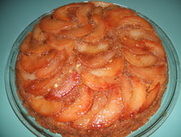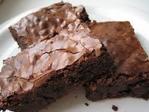1. Using the Wrong Temperature of Butter
Most recipes for baked goods call for creaming butter and sugar. It's very important that the butter be at room-temperature, completely softened butter. This allows the sugar crystals to slice through the fat, creating air pockets that give your finished product lift. When the butter is melted the result is a flat chewy texture best used in a cookie not a cake.
When making pie dough the butter needs to be very cold. This is important because too-soft butter won’t form the tiny pea-sized “crumbs” in the dough that lead to a flaky crust. As for recipes that call for melted butter and eggs, like pancakes, it’s best to let the butter cool slightly before combining it with the other ingredients. Hot melted butter will partially cook the eggs, turning your batter into scrambled eggs.
2 Swapping out Butter
Because it has a similar consistency to butter, you may think that you can swap out butter for shortening or coconut oil. The results will not be the same. Butter has unique properties, like the addition of water. Other solid oils do not, and the results will show in your finished product. Baking is as much a science as it is an art. Success of any given recipe depends on the specific chemical reactions between ingredients. Stick with recipes that have tested the variables. The same rules apply for oils, like vegetable and olive oil. Each oil has a different burning point, which are all higher than butter.
3. Adding Butter Too Soon When Searing
The reason butter is so tasty is also the reason it’s not ideal for high-heat cooking. The milk solids that give it a full, rounded flavor burn more quickly compared to fats like canola, vegetable, or virgin olive oil. But there’s a way to beat the system: Baste seared meats, seafood, and veggies in butter when they’re almost done cooking. The butter will turn fragrant and nutty, while helping turn the ingredient a beautiful golden brown. Alternatively, you can give protein like steak or chicken a hard sear with ghee, which is clarified butter (which contains no milk solids).
4. Balancing the Richness of Butter with Other Flavors
Butter is rich and fatty. but it needs supporting flavors to really make it come alive. When cooking with butter in savory applications, it should be tempered with acidic and bright ingredients, like lemon juice, zest or vinegar and a little salt.
5. Know Your Butter Salted or Unsalted
I prefer to bake with unsalted butter that way I can control the amount of salt that goes into a recipe. If you can not find unsalted butter, the salted version will work for cakes, cookies, and the like, just adjust the amount of or eliminate the pinch of salt you’d usually add to your baked item. Unsalted butter is also ideal for savory sauces, allowing you to add your own level of salt. Butter is salted to keep if fresh longer, and the amount of salt is typically 1/4 tsp per stick of butter, so not a huge amount.
Source
Bon Appetite, Rochell Bilow 3-2016


 RSS Feed
RSS Feed
